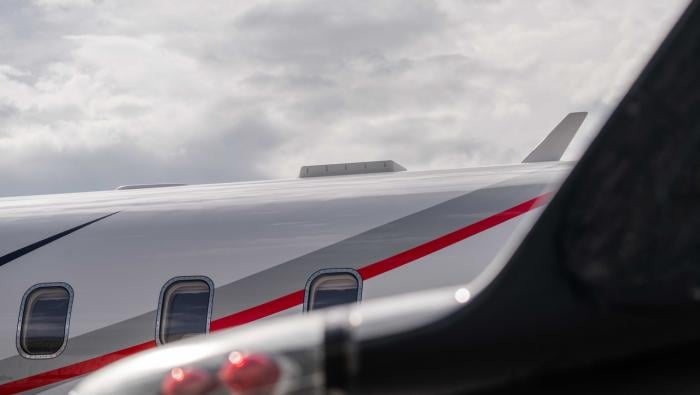Táxi Aéreo Marília (TAM) plans to transfer nearly all of its maintenance activity from São Paulo Congonhas Airport, Brazil, to the nearby Jundiaí Airport, where the company has already begun building a new hangar. The new facility is scheduled to open in midyear.
According to TAM president Rui Aquino, its Congonhas Airport location is already operating at capacity and TAM has outgrown its facilities there. TAM predicts that with the new facility, the number of takeoffs and landings at Congonhas will diminish by 360 per month.
“It’s very hard for single-engine airplanes to fly into São Paulo because of the restrictions,” Aquino said. Not only are there a limited number of slots, but single-engine aircraft are allowed to land only from 10 a.m. to 4 p.m. daily. As a result, the company has lost clients, he said. After gaining approval from the government of São Paulo, the company decided to transfer nearly all of its operations to Jundiaí, 35 miles away, which does not require landing slots and is open 24 hours a day.
The company’s charter service will continue to fly from Congonhas. However, all but one of the company’s mechanics will be transferred to the new facility.
The Jundiaí facility, which is scheduled to begin operating on July 1, will double TAM’s capacity. With the increase, TAM, which is the official representative of the full Cessna line in Brazil, will also begin servicing Raytheon and Bombardier aircraft. The new facility will cost $7.6 million, roughly half of which is being financed by Brazil’s BNDES development bank. Next year, if all goes as planned, the company plans to double capacity again.
Aquino said the TAM Táxi Aéreo’s operations will not be affected by its sister company’s merger with Varig. Unlike TAM the commercial airline, TAM Táxi Aéreo is fully controlled by the family of the late Rolim Amaro.
Over the next five years, TAM expects to be able to triple the number of airplanes it services each month from 60 to 180. TAM also expects to be able to service the airplanes more quickly. The company plans to hire a team specialized in servicing single-engine airplanes, an area that has not been a focal point for the company. TAM plans to double its staff to 500 over the next few years because of increased demand.
With the increased space, TAM expects its sales revenues to increase by 15- to 20 percent. Last year, the company’s sales revenues were expected to reach Real 100 million ($34 million). Of the company’s total revenues, 40 percent come from its executive jet services, 40 percent from maintenance and hangar fees and the remainder from aircraft sales.
While Brazil’s executive aviation industry has suffered during the past three years because of the country’s economic instability and turbulence in the market worldwide, Aquino expects to see improvements this year. According to a recent study completed by TAM, the number of flight hours per airplane has declined by 40 percent since 1999. “Use has been limited to an average of 35 hours per month per airplane,” said Aquino. Nonetheless, he believes that Brazilians are starting to realize that owning an airplane is possible.
The economic climate in Brazil has begun to show significant improvement, but even with an increase in demand, TAM will still be operating with excess capacity. The company doesn’t expect to increase the number of airplanes in its fleet anytime soon. Right now, the company has one Cessna 172, 15 Cessna Caravans and eight Cessna Citations. Of this fleet, the company is trying to sell six aircraft. Aquino said that while demand for airplanes is expected to rise this year, there will still be an excess of used airplanes on the market.
TAM will also promote its new Cessna flight training device, which is currently being translated into Portuguese. Aquino hopes that the new program, along with recent changes in the process of obtaining a pilot’s license in Brazil, will increase the number of people interested in owning and flying their own airplanes.
Aquino also believes that as the Brazilian airlines continue to focus on aircraft with more than 100 seats, the role of executive aviation will continue to increase in importance. “Right now, a majority of Brazil’s air traffic is concentrated in five cities, but economic development is occurring elsewhere and the demand for air transportation between these areas is increasing,” Aquino said.
Despite the need for better transportation throughout Brazil, Aquino believes that without government initiatives, the development of executive aviation will be slowed. “Only 120 cities in Brazil have airports,” Aquino said. That number needs to increase significantly, he added. For this to happen, the government needs to build infrastructure and increase incentives for the industry.







